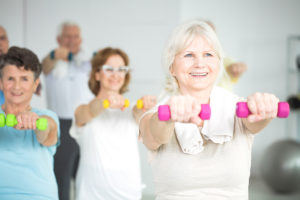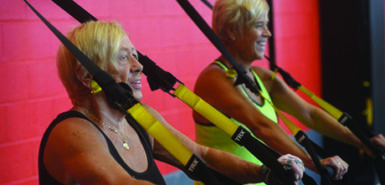
Hopefully, you enjoy exercising and don’t watch the clock, impatient for it to be over.
But it’s important to know how much exercise you’re getting so you can reap all its health rewards.
Between the ages of 18 and 64, barring any medical restrictions, the weekly goal is at least 150 minutes of moderate-intensity cardio (aerobic) exercise, or 75 minutes if the activity is vigorous, plus two or three strength-training sessions.
For older adults, it’s even better to shoot for five hours (300 minutes) each week of moderate-intensity aerobic activity and weight training/muscle-strengthening activities on two or more days a week, according to the U.S. Centers for Disease Control and Prevention.
Our Take
The benefits of physical activity and exercise go well beyond losing weight and building muscle mass.
“Exercises have been shown to help increase cognitive function, decrease anxiety/depression and even help in osteoporosis,” said Jason Lazor, DO, a physician with Spectrum Health Medical Group Orthopedic Sports Medicine.
“Sometimes the hardest part of exercising is knowing where to begin or knowing how much to do.”
About 300 minutes of moderate intensity exercise is a great goal to have, but realize that it is a goal and not a starting point.
“It is important to choose activities that you enjoy doing by yourself or with your friends,” Dr. Lazor added. “If just starting out exercising, be sure to have a graded progression toward the goals referenced in this article.”
Moderate-intensity cardio raises your heart rate and causes you to break a sweat—you’ll be able to talk, but not sing the words to a song. With vigorous-intensity cardio, you won’t be able to say more than a few words without pausing for a breath.
Moderate-intensity exercises:
- Brisk walking
- Water aerobics
- Cycling on mostly level ground
- Doubles tennis
Vigorous-intensity exercises:
- Jogging or running
- Swimming laps
- Cycling fast or on hills
- Singles tennis
- Basketball
While the amount of exercise time will stay consistent until your senior years, your target heart rate goes down slightly as you get older since it’s based in part on your age.
There’s no time minimum or maximum for strength training sessions. It’s however long it takes to work all your major muscle groups: legs, hips, back, abdomen, chest, shoulders and arms.
To preserve mobility and prevent falls, include exercises that enhance balance on three or more days every week.
If you can’t do the recommended amounts because of a health condition, be as physically active as you can, and work with your doctor on ways to get some movement into each day.
One final thought: the more you exercise, the bigger the payoff.
 /a>
/a>
 /a>
/a>
 /a>
/a>